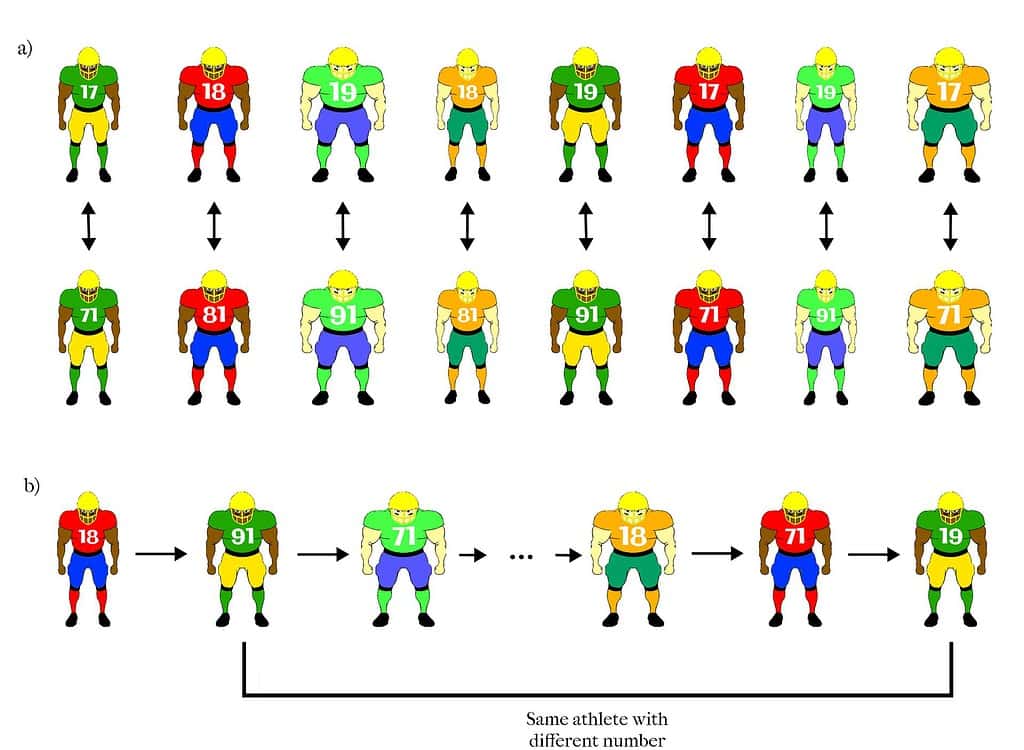A few years back, a news story found that many football players chose to wear jersey numbers between 10 and 19 because they believed lower numbers made them look slimmer and faster. It seems silly — but apparently, it’s not.
A new study, the first on this issue, found that the number a football player wears on their jersey can definitely affect how they are perceived.

Ladan Shams, a professor of psychology and neuroscience at the University of California, Los Angeles, and her colleagues, showed images of football players to volunteers, who agreed players in jerseys numbered 10 to 19 looked thinner than those in jerseys numbered from 80 to 89 — even when their body sizes where the same.
This suggests that previously learned statistical associations between numbers and sizes influence the perception of body size, the researchers argue. “How we perceive the world is influenced by our prior knowledge,” Shams said in a news release. “In our daily lives, numbers written on objects usually represent the magnitude of the objects.”
Jerseys and numbers
For many years, the NFL had a rule in place that required wide receivers to wear uniform numbers between 80 and 89. This rule was in place to help officials and fans easily identify the positions of players on the field. However, in 2004, the NFL changed this rule, allowing wide receivers more flexibility in choosing their jersey numbers.
By 2019, when the news story about football players was published, about 80% of wide receivers worse a jersey number between 10 and 19. Shams, a specialist in the science of perception, and her research team created an online study (during the pandemic) to test their suppositions about the popularity of the lower numbers.
They worked with a group of 37 volunteers who were shown computer-generated images of players in identical poses, but with different body sizes, skin tones and jersey colors. They were all asked to judge the slenderness of the players in the images but each player was actually included twice — once each in jerseys with high and low numbers.
Overall, the players who had jerseys numbered from 10 to 19 were seen as thinner than those in jerseys numbered 80 to 89, regardless of body size and skin or jersey colors. After the pandemic restrictions were eased, the researchers repeated the experiment in person and with a larger group of participants, 147, to double-check their findings.
But this time they used shirt numbers that included the same digits, for example, 17 and 71, 18 and 81 and 19 and 91. This ensured that the effect wasn’t because of the width of the written number. The results showed the volunteers still saw the players with higher numbers to be huskier than those players with lower numbers.
The results support the idea that when processing the perception of body size, the brain uses learned associations between numbers and object size attributes. Those learned associations, Shams said, generally help the brain to interpret sensory input, such as the pattern of light reception responses in the eye, as sensory input can be unreliable.
“Our work highlights the importance of representation,” Shams said in a news release. “We need to see all kinds of people doing the full diversity of things people can do. We can use the statistical learning power of our brains to reduce implicit bias.”
The study was published in the journal PLOS One.


